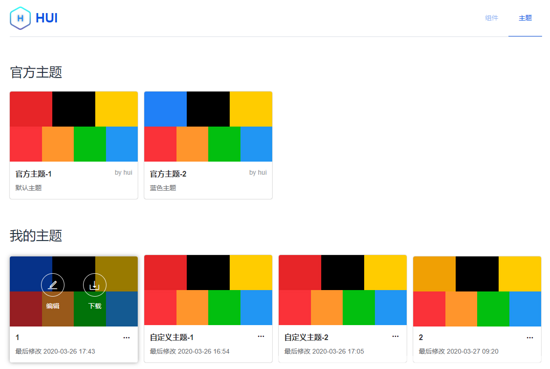django API 中接口的互相調(diào)用實例
我就廢話不多說了,還是直接上代碼吧!
url = 'http://%s:%s/api-token-auth/' % (ip, port) query_args = { 'username': username, 'password': password } resp = requests.post(url=url, data=query_args) token = json.loads(resp.text)['token'] headers = {'Authorization': 'JWT' + ' ' + token} # 拿到token,拼成headers post_url = 'http://%s:%s/message/message-level-two/'% (ip, port) data = { 'app': app, 'url': url, 'message_id': message_id, 'head': head, 'title': title, 'userprofile_id_list': userprofile_id_list } headers = self.headers requests.post(url=post_url, data=data, headers=headers)
獲取當前請求的ip和端口
host_ip, host_port = self.request.META.get('HTTP_HOST').split(’:’)[0], self.request.META.get('HTTP_HOST').split(’:’)[1]
常見的請求頭如下:
CONTENT_LENGTH ? The length of the request body (as a string).CONTENT_TYPE ? The MIME type of the request body.HTTP_ACCEPT ? Acceptable content types for the response.HTTP_ACCEPT_ENCODING ? Acceptable encodings for the response.HTTP_ACCEPT_LANGUAGE ? Acceptable languages for the response.HTTP_HOST ? The HTTP Host header sent by the client.HTTP_REFERER ? The referring page, if any.HTTP_USER_AGENT ? The client’s user-agent string.QUERY_STRING ? The query string, as a single (unparsed) string.REMOTE_ADDR ? The IP address of the client.REMOTE_HOST ? The hostname of the client.REMOTE_USER ? The user authenticated by the Web server, if any.REQUEST_METHOD ? A string such as 'GET' or 'POST'.SERVER_NAME ? The hostname of the server.SERVER_PORT ? The port of the server (as a string).
獲取請求頭內(nèi)容的用META
示例:
def index(request): ip = request.META.get('REMOTE_ADDR') return HttpResponse('你的ip地址是%s'%ip)
http://10.254.30.27/1self.kwargs[‘pk’] # 可以拿到后邊的 1
補充知識:django 使用requests請求相關(guān)接口
1、如果是get請求接口,并且需要帶相關(guān)參數(shù)的話,可以借鑒下面的代碼:
import requests from django.http import JsonResponse def get_info(request): url = ’http://www.baidu.com’ params = {’id’: 1, ’user’: ’lin’} response = requests.get(url=url, params=params) return JsonResponse(response.text, safe=False)
這樣將會返回一串json的字符串數(shù)據(jù)。
2、如果是post請求接口,并且需要帶相關(guān)參數(shù)的話,可以借鑒下面的代碼:
import requests from json import dumpsfrom django.http import JsonResponse def get_info(request): url = ’http://www.baidu.com’ data = {’id’: 1, ’user’: ’lin’} response = requests.post(url=url, data=dumps(data)) return JsonResponse(response.text, safe=False)
注:
(1)、其中必須注意的為data這個參數(shù),必須要用dumps(data)轉(zhuǎn)換一下,不然會報錯,response狀態(tài)碼為400,bad request error 400 while using python requests.post function。
(2)、如果需要在post請求底下加相關(guān)請求頭的話,可以借鑒下面的代碼:
import requests from json import dumpsfrom django.http import JsonResponse def get_info(request): url = ’http://www.baidu.com’ data = {’id’: 1, ’user’: ’lin’} headers = {’content-Type’: ’application/json’, ’Accept’: ’*/*’} response = requests.post(url=url, data=dumps(data), headers=headers) return JsonResponse(response.text, safe=False)
這里如果response的狀態(tài)碼報415錯誤的話,即HTTP請求415錯誤 ? 不支持的媒體類型(Unsupported media type),這就是content-Type可能寫錯了,就要注意一下了,因為通常接口會封裝一些參數(shù)到請求頭底下。
以上這篇django API 中接口的互相調(diào)用實例就是小編分享給大家的全部內(nèi)容了,希望能給大家一個參考,也希望大家多多支持好吧啦網(wǎng)。
相關(guān)文章:
1. idea設(shè)置自動導入依賴的方法步驟2. AspNetCore&MassTransit Courier實現(xiàn)分布式事務(wù)的詳細過程3. 部署vue+Springboot前后端分離項目的步驟實現(xiàn)4. vue組件庫的在線主題編輯器的實現(xiàn)思路5. Python安裝并操作redis實現(xiàn)流程詳解6. 網(wǎng)頁中img圖片使用css實現(xiàn)等比例自動縮放不變形(代碼已測試)7. Python常用擴展插件使用教程解析8. html清除浮動的6種方法示例9. 用python登錄帶弱圖片驗證碼的網(wǎng)站10. ASP.NET MVC通過勾選checkbox更改select的內(nèi)容

 網(wǎng)公網(wǎng)安備
網(wǎng)公網(wǎng)安備